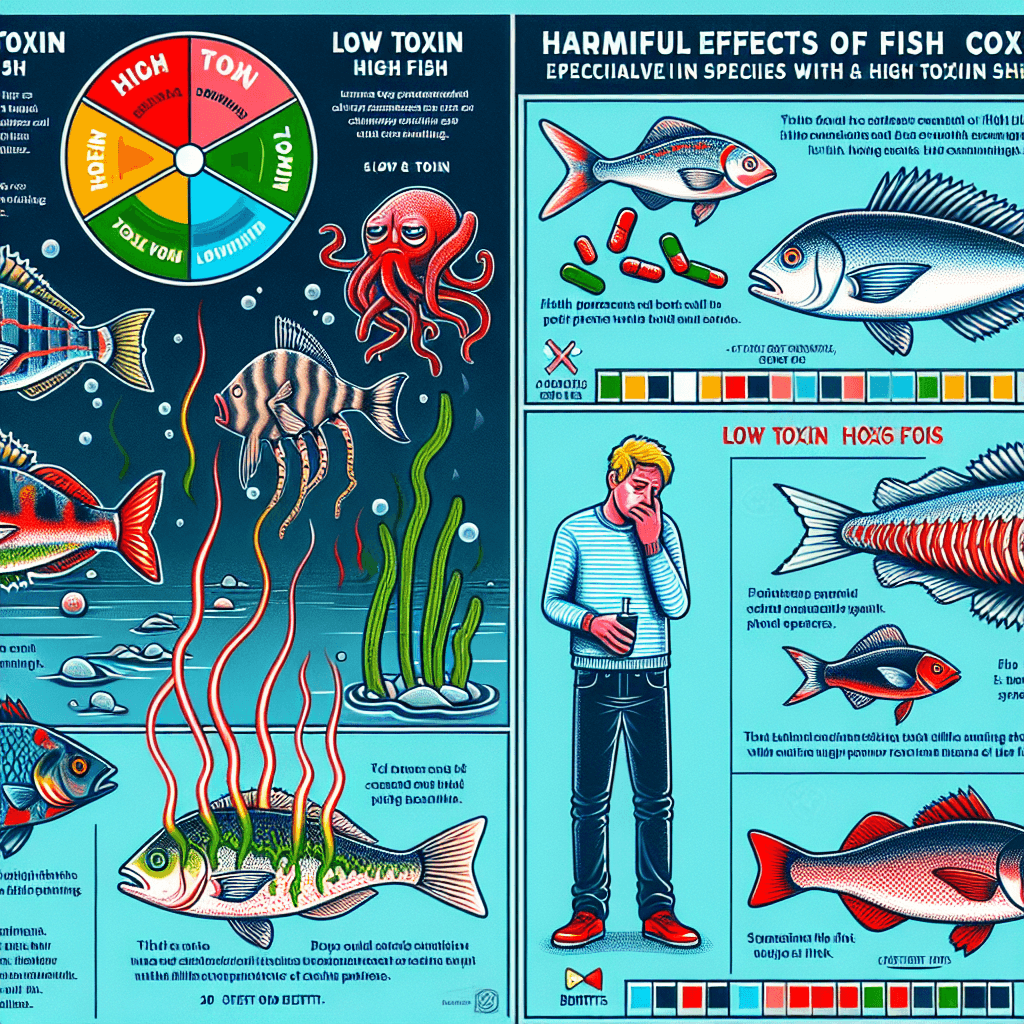The Hazards of Eating Fish: Choosing the Safest and Healthiest Options
*Above are some of my top picks for fish oil supplementation
1. Introduction: Exploring the Hazards of Eating Fish
Hazards of Eating Fish: What You Need to Know
Are you a seafood lover? While fish is often hailed for its high nutritional value, recent concerns have been raised about the potential hazards of consuming fish. From heavy metals to toxins, there are risks associated with eating fish that we need to be aware of.
In this blog post, we will uncover the truth about heavy metals like mercury, industrial chemicals such as PCBs, and toxic environmental contaminants like dioxins. It's time to shed light on the potential dangers that fish can pose to our health.
But it's not all doom and gloom. We will also uncover the truth about farmed fish and whether they are truly full of heavy metals and toxins. Are there measures in place to mitigate these risks? We will find out.
Furthermore, we will guide you through which types of fish have the least toxins. Armed with this knowledge, you can make informed decisions about the seafood you choose to put on your plate. So, if you're ready to dive into the world of fish consumption and discover the truth about its hazards, keep reading. Your health may depend on it.
2. Hazards of Eating Fish: Understanding the Risks
Mercury Contamination
Fish, while being a nutritious food choice, can also pose risks due to the presence of heavy metals and toxins. One major concern is mercury contamination. Fish can accumulate mercury from their diet and environment, especially those that are high on the food chain. This heavy metal can have detrimental effects on the nervous system, particularly in developing fetuses and young children. As a result, pregnant women, children, and individuals with compromised immune systems are advised to limit their consumption of fish with high mercury levels. The Environmental Protection Agency (EPA) and the Food and Drug Administration (FDA) provide guidelines on safe fish consumption to minimize mercury exposure.
Polychlorinated Biphenyls (PCBs)
Another potential risk associated with consuming fish is the presence of polychlorinated biphenyls (PCBs). These industrial chemicals were banned in the 1970s but can still persist in the environment and make their way into the food chain. Fish, especially those higher up in the food chain, may contain PCBs. The long-term effects of PCB exposure through fish consumption are not yet fully understood. However, it is important to be aware of this potential risk and make informed choices when selecting and consuming fish.
Dioxins
Dioxins are toxic environmental contaminants that can accumulate in fatty tissues. Fish can be a source of dioxin exposure, and high levels of dioxins have been linked to various health issues, including cancer, reproductive and developmental problems, and immune system impairment. However, the specific risks associated with dioxin exposure from fish consumption are still being studied. It is essential to stay informed about the latest research and recommendations regarding dioxin exposure and make choices that prioritize your health and well-being.
Taking Precautions
While the hazards of eating fish exist, it is also important to note that the benefits of consuming fish, such as essential omega-3 fatty acids and lean protein, cannot be overlooked. To minimize the risks associated with contaminants, it is advisable to follow guidelines from reputable organizations such as the EPA and FDA. Pregnant women, children, and individuals with compromised immune systems should limit their consumption of fish with high mercury levels. Additionally, opting for fish with lower levels of toxins, such as sardines, anchovies, herring, and wild-caught Pacific or Alaskan salmon, can be a healthier choice. It is also helpful to be aware of the farming practices and regulations in your region, as farmed fish may be exposed to toxins and contaminants. By making informed choices and taking necessary precautions, you can enjoy the nutritional benefits of fish while minimizing potential risks.
3. Presence of Toxins in Farmed Fish: Examining the Concerns
When it comes to consuming fish, concerns have been raised about the presence of heavy metals and toxins, especially in farmed fish. In this section, we will delve into the specific concerns regarding the presence of toxins in farmed fish and what factors contribute to their exposure. Here's what you need to know:
- **Heavy Metals**: Farmed fish can be exposed to heavy metals such as mercury, lead, and cadmium through their diet and water sources. These metals can accumulate in the fish's tissues and pose potential health risks to consumers. However, it is important to note that the concentrations of non-essential metals in farmed fish are generally low. This is due to measures such as metal supplementation in fish feed and regular monitoring to mitigate the risk of non-essential metal toxicity.
- **Toxins and Contaminants**: Intensive farming practices can expose farmed fish to toxins and contaminants such as pesticides and antibiotics. These substances can enter the fish through their feed, water, or treatment. However, the specific levels and risks associated with various toxins in farmed fish vary depending on the farming methods and regulations in different regions. It is essential to ensure that farms follow strict guidelines to minimize the presence of these toxins and contaminants in the fish.
- **Importance of Regulation**: To address the concerns surrounding the presence of toxins in farmed fish, it is crucial to have strict regulations in place. These regulations should cover various aspects of fish farming, including feed quality, water quality, and the use of antibiotics and pesticides. By enforcing these regulations, it is possible to minimize the risks associated with toxins and contaminants in farmed fish and ensure the safety of consumers.
Ensuring the safety of farmed fish and minimizing the presence of toxins and contaminants requires a collective effort from fish farmers, regulatory bodies, and consumers. By understanding the specific concerns and factors contributing to the presence of toxins in farmed fish, we can make informed choices when it comes to selecting our seafood. In the next section, we will explore which types of fish have the least toxins based on the available information, helping you make healthier choices for your seafood consumption. Stay tuned!
4. Fish with the Least Toxins: Making Healthier Choices
When it comes to making healthier choices regarding the fish we consume, it's essential to consider the levels of toxins present in different species. While it's impossible to completely avoid all toxins, certain fish have been found to have lower toxin levels compared to others. So, if you're looking to minimize your exposure to contaminants, here are some fish that are often mentioned as having fewer toxins:
1. Sardines: These small, oily fish are not only rich in omega-3 fatty acids but also have lower levels of contaminants. This is because they have a shorter lifespan and occupy a lower position in the food chain.
2. Anchovies: Similar to sardines, anchovies are small fish that have lower contaminant levels. They are often used in various dishes and are a popular choice among seafood enthusiasts.
3. Herring: Another oily fish, herring, is known for its lower toxin levels. It's a healthier choice for those looking to incorporate fish into their diet while minimizing exposure to contaminants.
4. Butterfish: Butterfish, also known as escolar or white tuna, is a small fish with low toxin levels. It is often favored for its mild flavor and delicate texture.
5. Wild-caught Pacific or Alaskan Salmon: If you're a fan of salmon, opting for wild-caught varieties from the Pacific or Alaskan regions is generally considered a healthier choice. These fish tend to have lower contaminant levels compared to their farmed counterparts.
It's important to note that these recommendations are based on available information and may not cover all possible fish species. Additionally, factors such as the fishing location and farming practices can influence the levels of toxins in fish. Therefore, staying informed and being mindful of the fish you consume can help you make healthier choices and enjoy the benefits of seafood without unnecessary exposure to toxins.
5. Conclusion: Promoting Safe and Nutritious Seafood Consumption
In conclusion, it is essential to be aware of the hazards associated with eating fish and the presence of toxins in farmed fish. By understanding the risks, we can make informed choices to protect our health and well-being. While it may be concerning to learn about the heavy metals and toxins found in some fish, it is reassuring to know that there are options available that have lower levels of toxins. By opting for fish with the least toxins, we can enjoy the benefits of seafood while minimizing our exposure to harmful substances. Some examples of fish with lower toxin levels include wild-caught salmon, sardines, and rainbow trout. These fish not only offer important nutrients like omega-3 fatty acids but also pose fewer risks in terms of contaminants. Remember to also consider the source of your fish, opting for sustainably and responsibly sourced seafood whenever possible. By making conscious choices, we can promote safe and nutritious seafood consumption for ourselves and future generations. So go ahead, explore the vast array of fish options available and embark on a journey towards a healthier and more sustainable seafood diet. Your body will thank you, and so will the environment. Safe and enjoyable seafood consumption awaits you!




Recent post